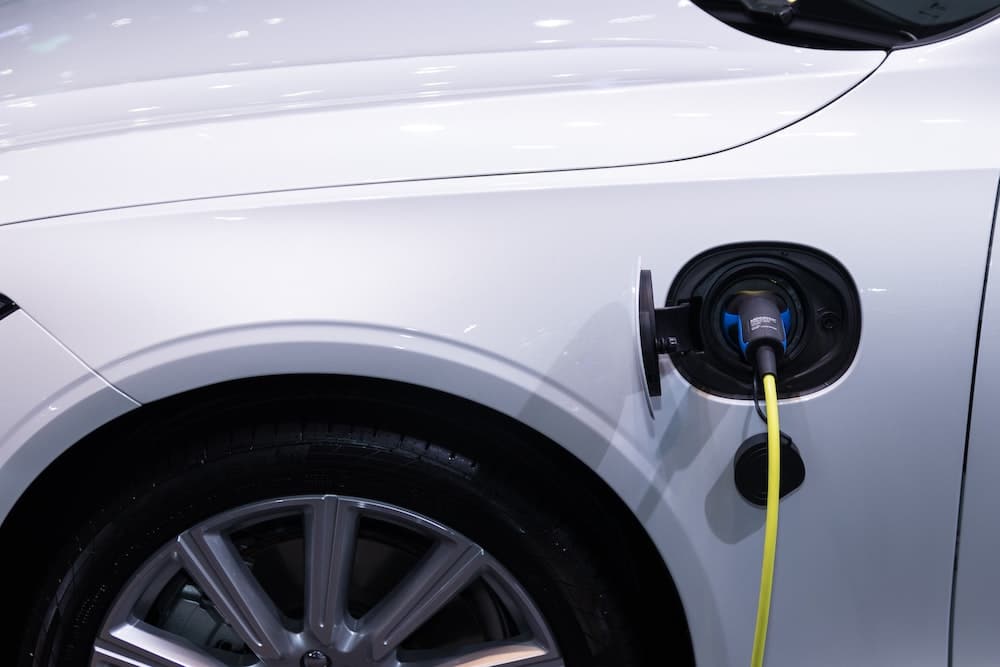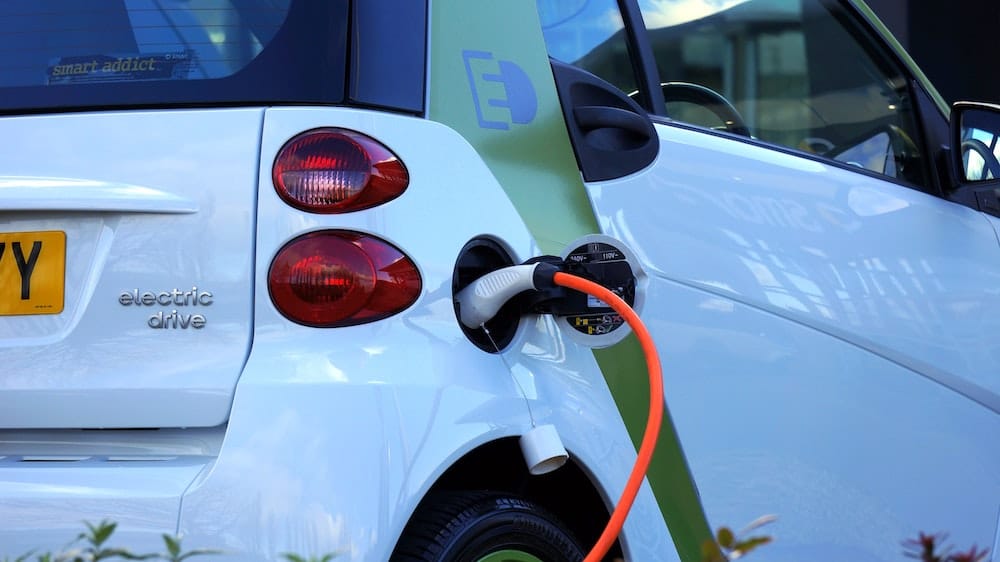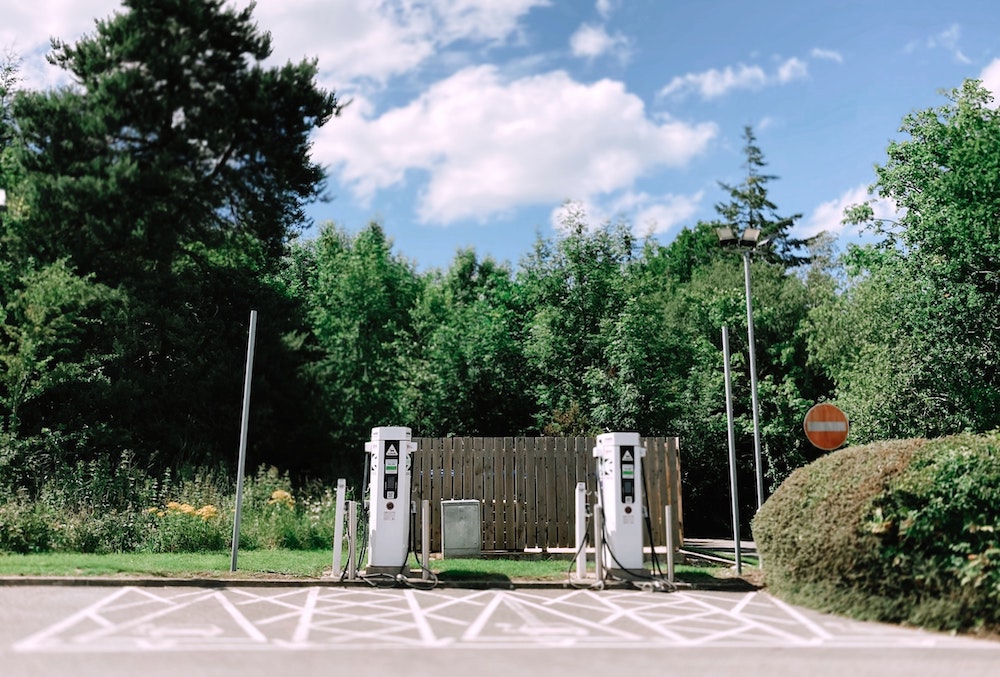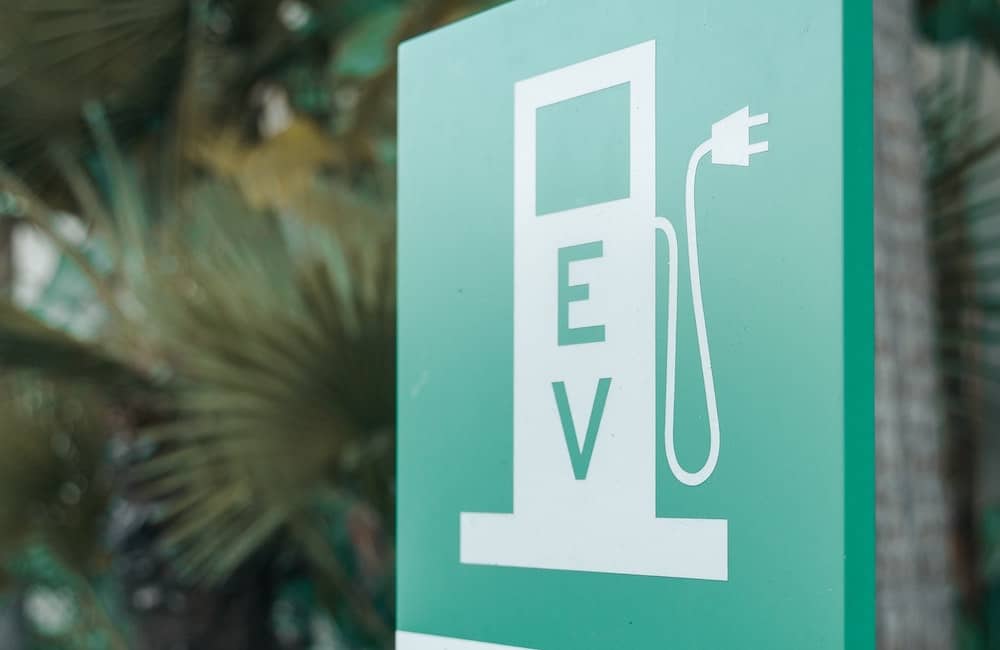Although the challenges of adopting EVs into your fleet may seem overwhelming, solutions are available. Knowing the challenges of EVs is an important first step. But knowing what solutions are available is critical to a successful transition. Read to the end for solutions like how to reduce the cost of charging electric vehicles by up to 50%, innovative battery swapping tech, and more.
Charging infrastructure, limited battery supply, range, and the cost of switching to EVs are holding fleet managers back nationwide, but finding solutions when you electrify your fleet is possible.
Let’s dive in.

EV battery swapping is a method of quickly and easily replacing the battery of an electric vehicle (EV) with a fully charged battery rather than waiting for the vehicle to charge.
It involves a battery swap station where EV drivers can drive in, replace their depleted battery with a fully charged one, and drive out in minutes. This allows EV drivers to continue their journey without waiting 30 minutes or longer for the battery to charge.
This method is handy for fleet managers since they can avoid the cost-prohibitive need to build numerous charging stations, and their vehicles could recharge in a matter of minutes, not hours, much as they would at a gas station.

Ample, a battery-swapping startup in the US, is prioritizing commercial auto fleets for their modular battery-swapping tech. Their station has a special plate that can identify the exact location of each battery to be swapped. The battery is then shelved so it can be charged and ready for the next vehicle.
While building enough chargers for a large fleet could cost in the millions, tapping into Ample’s network of battery-swapping stations costs $0 upfront. The company covers the expense of building the stations and then charges users a per-mile cost for the energy delivered.
Part of the reason Ample can build its stations quickly and cheaply is that they don’t typically require electrical infrastructure upgrades. The stations simply plug into the grid and charge the batteries gradually when energy is cheapest and most abundant.
While the entire battery-swapping process could take less than 10 minutes, battery-swapping is not yet readily available due to:
Statistics from Acumen Research show that the global market revenue for EV battery-swapping was $134.1 million in 2021. This number is expected to grow at a compound annual growth rate (CAGR) of 26.8% from 2022 to 2030, indicating that there is likely a healthy future for battery swapping.

Fleet managers can use smart charging solutions — such as charging management software — to optimize the charging process, reduce costs and lower the impact on the grid.
This technology efficiently manages the charging of multiple EVs by analyzing battery levels and expected usage to determine the best time and charge duration for each vehicle. This helps charging infrastructure providers decrease the load on the electrical grid during peak hours and ensure vehicles are optimally charged.

While smart charging increases charging efficiency and helps to save money, most EV fleets aren’t taking advantage of it.

Smart charging is still a new concept that hasn’t been implemented widely; however, statistics show that there is a growing interest and awareness.

Fleet managers can schedule EV charging during off-peak hours to reduce the strain on the grid and take advantage of lower electricity prices.
In fact, a study by the National Renewable Energy Laboratory found that fleet vehicles are particularly well-suited for off-peak charging, as they tend to have more predictable usage patterns and can be scheduled for charging during low-demand periods.
There are even government incentives to reduce the load from the electric grid and charge during off-peak hours.
In California, the state’s three largest investor-owned utilities offer special off-peak rates for commercial and EV fleet charging, resulting in significant cost savings for businesses.

Furthermore, a report by the International Energy Agency (IEA) suggests that fleet electrification could play a major role in increasing the share of off-peak EV charging, as fleets have the potential to significantly increase overall EV demand and utilization.
As more and more businesses turn to fleet electrification, prioritizing off-peak charging is likely to become heavily incentivized.

Vehicle-to-grid (V2G) technology allows EVs to feed unused energy back to the grid. This can help to balance the grid and reduce the need for expensive peak power generation.
A report by the International Energy Agency (IEA) suggests that V2G technology could play an important role in integrating renewable energy into the power grid by allowing EVs to provide grid services such as frequency regulation and peak shaving.

The global Vehicle to Grid (V2G) market size is predicted to reach $28.12 billion by 2026, growing at CAGR of 4.28% from 2021 to 2026.
However, challenges still face V2G from being adopted widely throughout the US:

Nevertheless, the benefits of V2G technology could greatly outweigh the challenges:
While V2G has a long way to go before it can be widely adopted, its benefits could affect fleet managers, drivers, utility companies, and the environment alike.

According to a 2019 report from AAA, at 20°F, driving range decreases by as much as 41%. One way to beat this is by preconditioning your EVs. It’s key strategy for reducing range loss and improving overall efficiency. Preconditioning helps minimize the impact of extreme weather on EV range by ensuring that both the battery and cabin are at proper temps before disconnecting from the charger and departing.
Some models allow users to schedule departure times in order to properly precondition before departure. Taking advantage of this feature can help to ensure the vehicle is ready for departure every time.
In winter, preconditioning ensures that the battery is at an optimal operating temperature (40-80º F), reducing the energy required to warm it up during driving and preserving the range of the vehicle. Additionally, warming up the cabin before disconnecting can also reduce battery drain.
Other tips for cold weather include removing snow from the vehicle before driving and parking in direct sunlight when outdoor parking is a must. Indoor parking is optimal. Using steering wheel or seat warmers also makes a huge difference in driver comfort while drawing less power from the battery than using the heater.
Inversely, when outdoor temps rise, cooling the cabin before disconnecting from the charger helps to beat battery drain. Alternatively, drivers can opt to simply roll down their windows when bearable.
Lastly, instructing your drivers to park in cooler areas and use sun shades can also help to limit excessive AC usage during summer months.

Overall, addressing the challenges of fleet electrification will require a combination of solutions like charging infrastructure, battery management, and smart charging solutions.
Ultimately, the future looks bright for the EV fleet.
EVs are generally considered a great investment choice. When looking at fleet electrification, consider these factors:
You should conduct a detailed cost-benefit analysis to evaluate all relevant factors before deciding to transition from conventional vehicles to EVs.
There are several reasons why fleets are going electric:
Overall, fleets are transitioning to EVs for financial, business, environmental, and regulatory reasons. The technology is advancing, and the incentives and regulations are pushing the market towards electric vehicles, making them a more attractive option for fleet businesses despite the challenges.
The EV industry has seen huge growth, so keeping on top of trends is important for fleet managers if they want to transition to fleet electrification:

Suite of Forward Thinking Systems fleet management and fleet operations software optimized for an EV fleet, electric vehicles, reducing fuel costs, optimizing route, and more.
Psssst… Want to see how our fleet management tools can help you run your EV fleet effectively?
Grab a free demo.
Do it.
Do it now.
Right down here. ⬇️

Recent Posts
Categories
Stay in Touch
Ready to make fleet management more manageable?